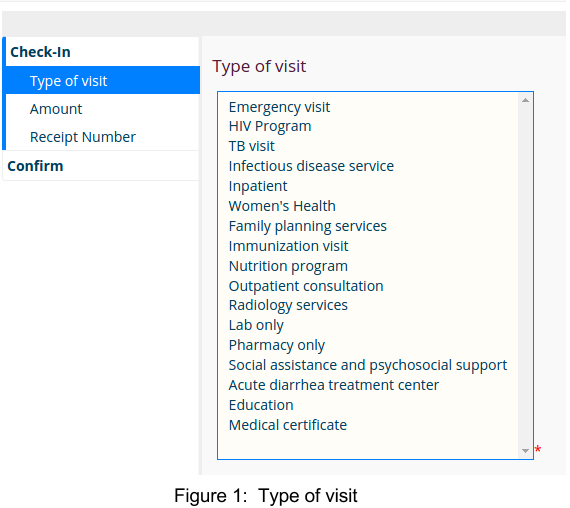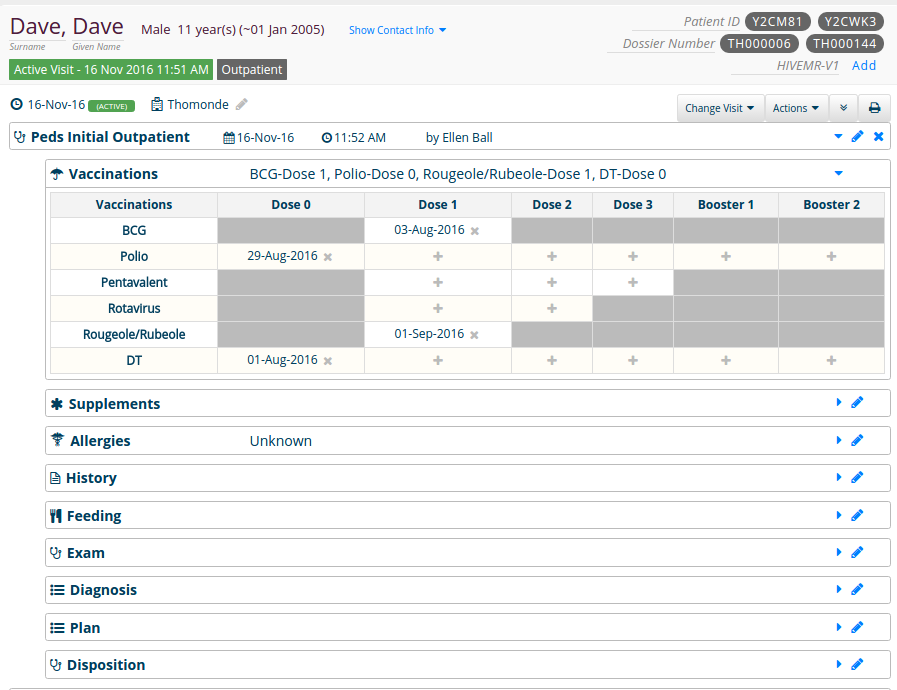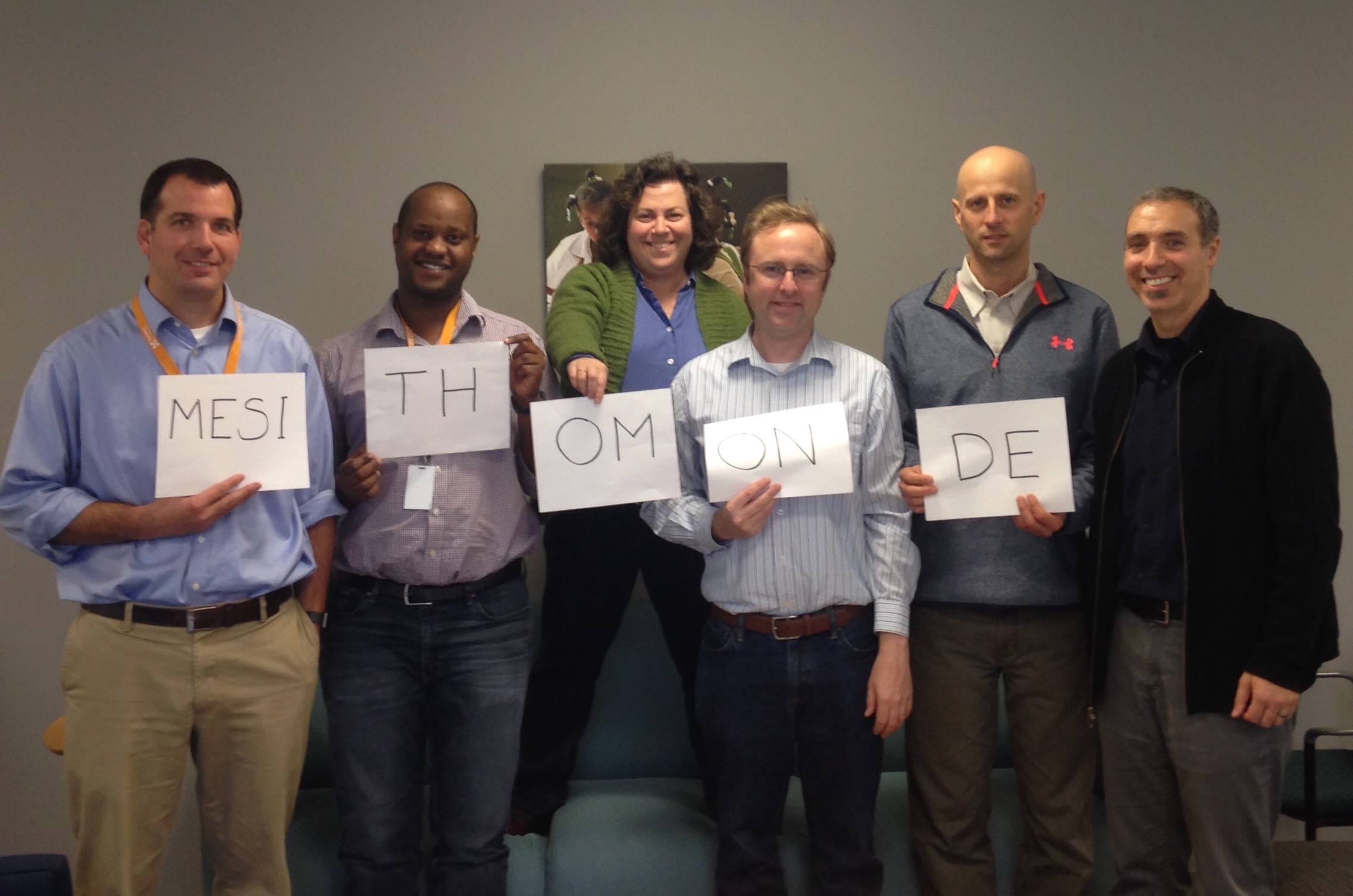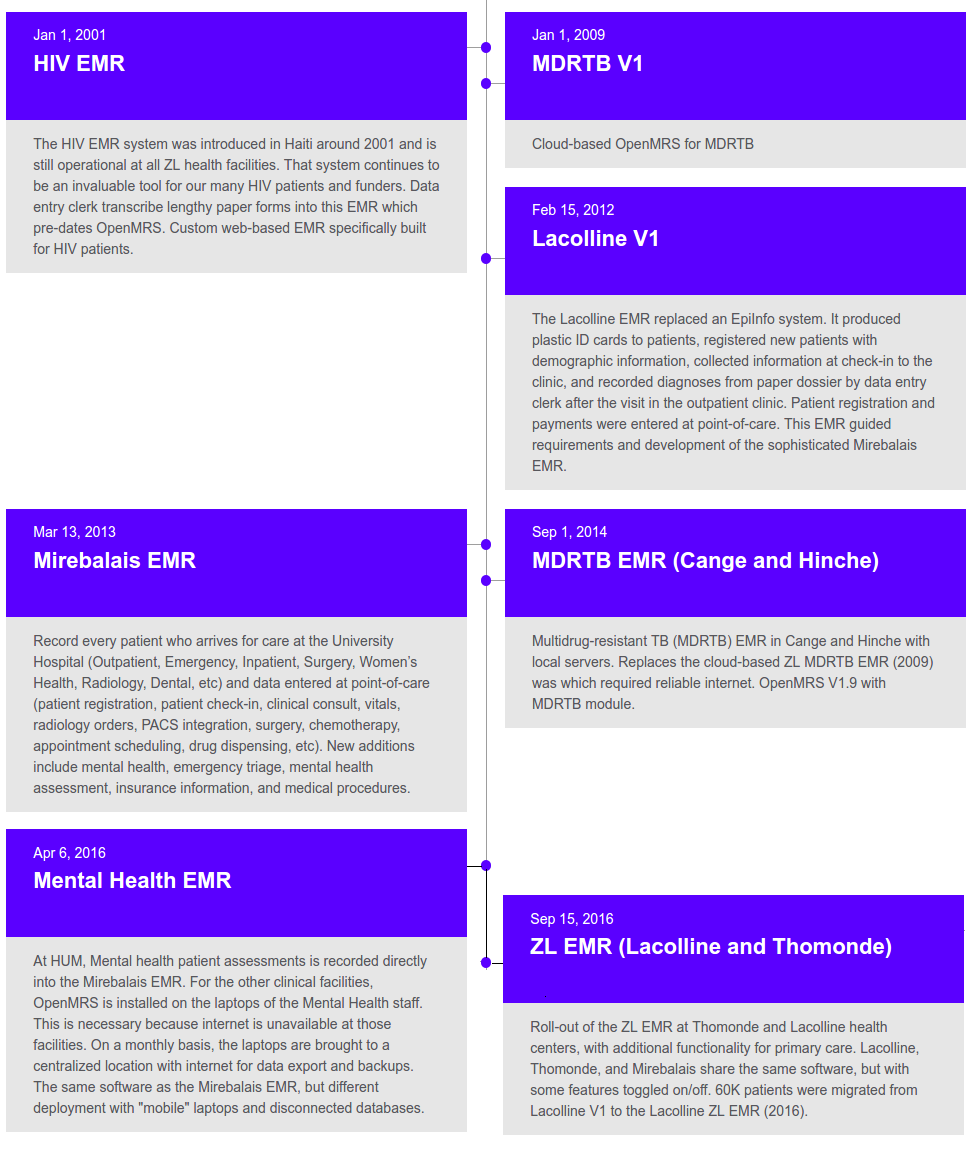The Zanmi Lasante Electronic Medical Record (ZL EMR) system was deployed for primary care at Thomonde Health Center in Thomonde, Haiti (October 2016) and Lacolline Health Center in Lascahobas, Haiti (December 2016). This point-of-care system is used by clinicians and data archivists: Clinicians capture vital signs and clinical consultation data; Archivists capture patient registration and workflow. Based on experiences at Thomonde and Lacolline Health Centers, additional EMRs will be deployed at Zanmi Lasante Health Centers and Hospitals.
Goals
Identify and register all patients at a facility, regardless of program.
Enable clinicians to enter data directly at the point-of-care, leading to reduced data backlogs, higher quality data and improved access to data for patient care. This is accomplished through local server installations that eliminate previous barriers due to internet access.
In the future, leverage this base platform to support our clinical programs by providing timely, accurate, complete data on patients enrolled in HIV, TB, Nutrition, Maternal & Child Health, and other strategic clinical areas. Assist programs with referrals into care, eliminate loss to followup, and evaluate clinical outcomes. Understand the burden of disease along with expanding universal health coverage (UHC).
System description
Building upon the initial ZL EMR implementation at University Hospital at Mirebalais, the ZL EMR system was expanded for use at primary care health centers in Thomonde and Lacolline. The same OpenMRS software is used at all three sites (Mirebalais, Thomonde and Lacolline), but with various features toggled on or off, based on the capabilities of the health facility. (For example, the Radiology interface is only accessible at Mirebalais where there is a PACS system exchanging data with the EMR).
The ZL EMR primary care functionality includes patient registration, check-in, vital signs, and primary care visit information, including history, vaccinations, allergies, physical exam, diagnoses, and treatment plan.
The Thomonde EMR started capturing patient registration and visit notes on October 14, 2016, after a training program of registration staff and clinicians. (As of November 8, 2016, 332 patients were registered in the EMR along with 167 vital signs encounters and 164 visit notes.)
The Lacolline EMR (V2) started on December 5, 2016. 60K patient demographics records were migrated from the Lacolline EMR V1. These were patients who were seen at the Lacolline outpatient clinic between 2012 and 2015. In the first month, over 1000 patients were checked in at the clinic.
Data entry
All data is entered into the EMR at point-of-care. Registration of all new patients is completed by data archivists (name, gender, birthdate, address, insurance info, mother’s name, contact information, etc).
New and returning patients are “checked in” by cashiers who collect payment. The registration and check-in software is exactly the same as used at University Hospital in Mirebalais. At check-in, the reason for visit is recorded (ie. HIV, TB, etc) (Figure 1). | For Thomonde and Lacolline, the system was expanded to collect the entire visit note so that data would be easily available for patient care and decision support. A clinical dashboard (Figure 2) was created for a simple summary of the most recent information (ie. vitals, diagnoses, visits, allergies). | After a patient visit is started, the clinician selects the appropriate action (vitals, intake or followup; adult or pediatric). There are many sections in the various forms (Figure 3) -- but there is a summary available for all the data captured in each section. A printout is available from this page that can be added to the patient file. |
|---|
Reports
All data is generated from the EMR. Data can be exported for various patient encounters (ie. registration, vitals, visit note, etc.) (Figure 4) The user customizes data output by date range. Some data is viewed directly by using the web browser and all data can be exported as csv/excel files.
Team
There were many collaborators for this project: ZL Leadership and Information technology; Boston PIH Development, Finance, Medical Informatics; Thomonde and Lacolline leadership, clinicians, and staff. Gratitude to MAC AIDS for funding.
Zanmi Lasante (ZL) IT (L-R) Wesly Official, Peterson, Dupuy Rony Charles, Claude, Pierre Charles Mingot, Edwenson Raphael, Jean Baptiste Prince, | Partners In Health (PIH) Boston Medical Informatics (L-R) Mike Seaton, James Mbabazi, Ellen Ball, Mark Goodrich, Cosmin Ioan, and Dave DeSimone |
|---|
Background
The Partners In Health (PIH) program in Haiti, known locally as Zanmi Lasante (ZL), operates clinics and hospitals at 12 sites across the Central Plateau and the lower Artibonite, two of the country's poorest regions. Beyond the HIV EMR, all these systems use OpenMRS:
Technical specifications
The ZL EMR is built with the OpenMRS Reference Application and Platform 1.10 along with customized of workflow, htmlforms, and reports. The ZL EMR is available in Haitian Kreyol, French, and English.
With local server hardware, reliable internet is not required. Internet is utilized when available for data backup and system maintenance. The infrastructure included internet, local area network, multiple power sources (grid, generator, solar, and battery backups), A/C, and rack server. The HP server is running VirtualBox with Ubuntu 14.04 LTS 64-bit.

.png?version=2&modificationDate=1479465383000&cacheVersion=1&api=v2&width=248&height=150)

.png?version=2&modificationDate=1479465476000&cacheVersion=1&api=v2&width=581&height=250)

